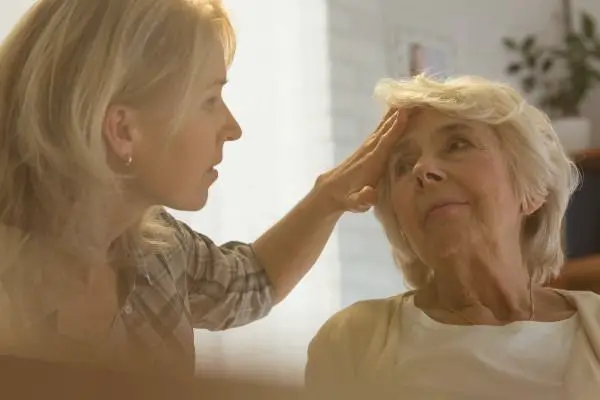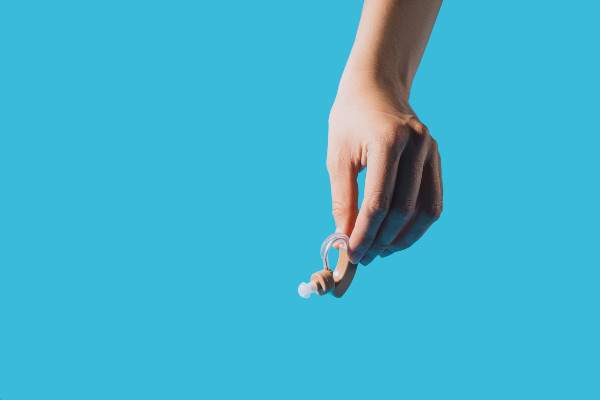Introduction
The technological advancements we’ve seen in recent years have left no stone unturned. They’ve extended their reach, impacting all spheres of life, including how we address health challenges. Among these, the strides made in helping individuals with meningitis-induced hearing loss navigate their world stand out as particularly noteworthy. As empathetic caregivers, we are privy to the transformative power of these developments in changing lives. In the spirit of the compassionate advisor, this blog post serves to guide you through some of these advancements, their benefits, and how to integrate them into daily life.
Throughout this deep-dive exploration, we will look at how assistive devices are transforming lives, delve into communication strategies for individuals with meningitis-induced hearing loss, and explore the power of telemedicine and remote support. We’ll also investigate the potential of smartphone apps and tools, and discuss the role of wearable technology in managing hearing loss. Each topic aims to arm you with knowledge and insights, allowing you to offer the best possible support for those affected by meningitis and hearing loss.
Whether you’re a caregiver, a loved one, or a healthcare professional working with meningitis survivors, this blog post is designed to shed light on the cutting-edge technology that can improve communication, provide support, and enhance the overall quality of life for those affected by meningitis-related hearing loss.
Hearing Loss and Technology: How Assistive Devices are Transforming Lives
In the face of hearing loss, technology has stepped up, presenting solutions that transcend the traditional hearing aid. Assistive listening devices (ALDs) are now a crucial part of hearing loss management. ALDs such as FM systems, infrared systems, and induction loop systems, help to amplify sound and reduce background noise. For meningitis survivors, these devices can make a world of difference, turning a challenging auditory environment into a manageable one.
For example, Williams Sound, a leading company in the field, offers FM Plus, an FM system that provides clear, interference-free communication in various settings – from classrooms to business meetings. This can significantly improve the auditory experience for meningitis survivors, making them feel more connected to their surroundings.
Communication Strategies for Individuals with Meningitis-Induced Hearing Loss
Communication for those living with meningitis-induced hearing loss doesn’t need to be a constant struggle. Various strategies and devices can ease this process, improving both their social interactions and overall quality of life. From using ALDs to employing speech-to-text apps and learning visual communication skills like sign language, the options are plentiful.
The use of visual aids can also be helpful. American Sign Language (ASL) or Signed Exact English (SEE) are essential tools that can aid communication for individuals with hearing loss. Additionally, using body language and facial expressions to complement speech can also be highly effective.
Telemedicine and Remote Support for Meningitis Survivors with Hearing Loss
The advent of telemedicine has significantly broadened the scope of healthcare services, especially for individuals with hearing loss. This technological leap offers incredible benefits, including timely care, reduced travel, and access to a broader range of specialists.
Meningitis survivors with hearing loss can now schedule virtual audiology appointments or join online support groups. Platforms like Amwell offer teleaudiology services that can be accessed right from home. This enables a more flexible, convenient, and prompt response to any arising audiological needs.
Moreover, remote hearing aid adjustments have become a reality. Companies such as Phonak have introduced remote support solutions, allowing audiologists to fine-tune hearing aids in real-time over a video call. This ensures optimal performance of the device, enhancing the user’s auditory experience.
Beyond medical care, online communities and support groups play a crucial role in coping with hearing loss. Websites like Hearing Like Me offer online forums where individuals can share their experiences, offer advice, and provide emotional support.
Deafness: A Journey of Challenges and Triumphs
Smartphone Apps and Tools for Enhancing Hearing in Meningitis Patients
In our digital age, the smartphone has become an essential tool for managing health conditions, and hearing loss is no exception. A plethora of smartphone apps and tools are now available, designed to assist those with hearing impairments.
One such app is Oticon ON. Designed for Oticon hearing aids, it allows users to adjust their hearing aid settings directly from their smartphones. It also connects to a range of IFTTT (If This Then That) services, enabling automation of numerous tasks around the home, making life easier for those with hearing loss.
For those who use cochlear implants, apps such as Nucleus Smart from Cochlear allow users to control, monitor, and customize their hearing on their smartphone. They can even locate a lost sound processor using the app – a practical tool for daily life.
There are also numerous apps that transcribe conversations in real-time, like Google’s Live Transcribe, offering those with hearing loss a visual aid to follow spoken communication more effectively.
Wearable Technology for Monitoring and Managing Hearing Loss in Meningitis Cases
Wearable technology has also entered the hearing loss scene, offering innovative solutions for monitoring and managing hearing health. For instance, the Apple Watch has a Noise app that can send alerts when decibel levels reach points that could affect hearing.
Fitness trackers and smartwatches often come with inbuilt health monitoring features, including tracking noise exposure. The Samsung Galaxy Watch3 can alert users when they are in environments that could potentially harm their hearing, encouraging them to take preventative measures.
For those with severe to profound hearing loss, the Vibio bed shaker is a fantastic tool. It pairs with a smartphone to alert users of calls, messages, and alarms through strong vibrations, ensuring that they don’t miss out on important notifications while sleeping or when their hearing aids are off.
Telemedicine, smartphone apps, and wearable technology – each of these advancements carries with it the potential to transform the lives of meningitis survivors with hearing loss. They offer the ability to connect, communicate, and manage their condition in ways that were not possible before.
These technological breakthroughs have ushered in an era of accessibility and inclusivity. Hearing loss, a consequence often borne by meningitis survivors, no longer implies a life of isolation or struggle. With the right tools, guidance, and support, living a fulfilling and connected life is absolutely achievable.
Conclusion
In our journey together through this blog post, we have traversed the landscape of technology as it pertains to meningitis and hearing loss. We’ve explored how assistive devices are transforming lives, understood the importance of strategic communication for individuals with meningitis-induced hearing loss, and highlighted the life-changing potential of telemedicine and remote support.
We’ve also discovered the power of smartphone apps and tools designed specifically for those with hearing loss, and peeked into the world of wearable technology that helps monitor and manage hearing health. Each of these elements holds the potential to dramatically improve the lives of individuals living with meningitis-induced hearing loss.
The proliferation of these technological advancements tells us that we are in an era of hope and progress. For those touched by meningitis and its aftermath, this is a testament to the power of human ingenuity and compassion. It underscores our collective determination to ensure that everyone, regardless of their health circumstances, can participate fully in the world around them.
Embracing technology is more than about keeping up with the times. It is about breaking down barriers, creating opportunities, and offering individuals the means to lead the best life they possibly can. As caregivers, loved ones, or healthcare professionals, we must continue to push forward, champion these advancements, and advocate for those whose lives we have the power to improve.









